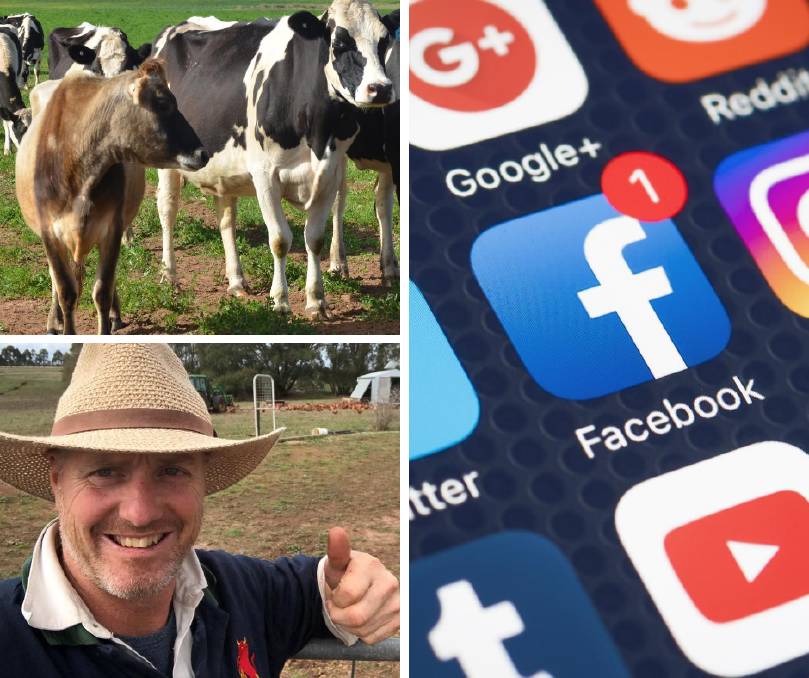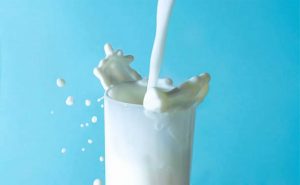A webinar, hosted by the Young Dairy Network of West Vic Dairy on Thursday night, looked at ways individual farmers could use social media to connect – with other farmers and people off-farm.
The panel included former United Dairyfarmer of Vic president Adam Jenkins, who uses Facebook and Twitter to reach a national audience with his videos, co-founder and moderator of Facebook group Show some #dairylove, which has 22,000 members Di Bowles, and Mallee mixed farmer Peter Vallance, who has a TikTok global following of 337,000.
Host Heather Smillie, West Vic Dairy YDN coordinator, says statistics show nearly 90 per cent of people in Australia had access to social media, whether Twitter, Facebook, TikTok or even LinkedIn.
Mr Jenkins said social media had an ability to bring people into the lives of those on-farm.
“We do produce a great product on farms and we do have challenges,” he said.
“It’s about letting them in to see what we do well.”
Mr Vallance said he initially started doing TikTok videos after seeing a lot of United States-based farmers on there getting good responses.
“I’ve always maintained, if you’re not part of the solution, you’re part of the problem,” he said.
“No one is going to tell our story but us so we’ve got to get out and tell it.
“Now I go to work everyday with 10,000 of my best mates.”
Ms Bowles said her Facebook group was originally started during the Murray Goulburn milk crisis where, as a Murray Goulburn supplier, she saw her social media feeds becoming increasingly angry and negative and wanted to balance that out.
“We need to be proud of what we do,” she said.
She said while starting up the page, she and her co-founders “did everything wrong” as far as conventional social media rules “but it worked”.
Ms Bowles says it initially took over her life before she was able to find the right balance but the space has become a positive one, particularly during a time like this pandemic.
She said one trick she learnt early was not to respond immediately as then people would always expect that.
Mr Vallance said some of the biggest benefits was by putting a face to the industry for many people who had little connection.
“It’s the human element, we’ve got to show people we are real people, just like them but with a lot more fluffy animals,” he said.
“Being able to connect with people through TikTok has been amazing.
“The hardest thing I have is keeping is really simple in what I’m trying to explain and not over complicate it.
Mr Jenkins agrees, saying he tries to pick one message per video, keep it to three clear points, and keep the video short.
Ms Bowles said having this audience does allow for education of people outside the industry.
“We get asked things like do we milk on Christmas day,” she said.
“So there is education but also friendship where people feel like they know you, even if they’ve never met you.”
Mr Jenkins said it can be difficult to put himself out there but he considers the person in the videos to be his “alter ego”.
“I don’t do a lot of preparation – if I do prepare it doesn’t come out right and loses that authenticity,” he said.
Mr Vallance said he has spent a lot of time on some videos that did not have the reach of something he has spent very little time and effort on, so he now avoids overthinking the process.
He also tries not to spend too much time following algorithms and peaks times, as that can lose the authenticity, but says there often is a lift at certain times.
“Saturday and Sunday, first thing on a Monday morning people need a laugh, and people are bored on a Thursday afternoon,” he said.
“But I don’t try and pick high spots – I just do as much of real life with the boring bts cut out and just post it. It makes it more real.”
Mr Jenkins said there is something special about sharing life on a farm, particularly for those living in urban centres..
“We see it everyday and don’t think it’s that’s interesting but this just allows people into our world,” he said.
Mr Jenkins said as well as speaking to potential dairy consumers, he also sees the value in social media for connecting with mainstream media and politicians.
“I realised journalists were scanning Twitter for a Monday morning story for their news cycles,” he said.
“So you can get amongst and if you put it out there, it can get packaged up as a positive of facts-based story.”
He also uses Twitter to connect with politicians by tagging them into the conversation but says the tone needs to be right to be effective.
“I try to steer away from having a full on crack at them because why would people respond to that?,” he said.
Mr Jenkins said there was sometimes negative feedback, which was hard to take.
“It’s not natural to constantly take a barrage of rubbish,” he said.
“Don’t respond to everything, or you’ll be there forever.”
He said he tried to remain pleasant and respectful even when addressing “keyboard warriors” and liked to sign off by wishing them a good day
Ms Bowles said her main tips were to avoid saying anything on social media that you would not say to some ones’ face, make the most of pictures and, if using hashtags, be consistent.
A second webinar on using social media for businesses will be held this Thursday night. Register at bit.ly/socialmedia4dairybusiness.













